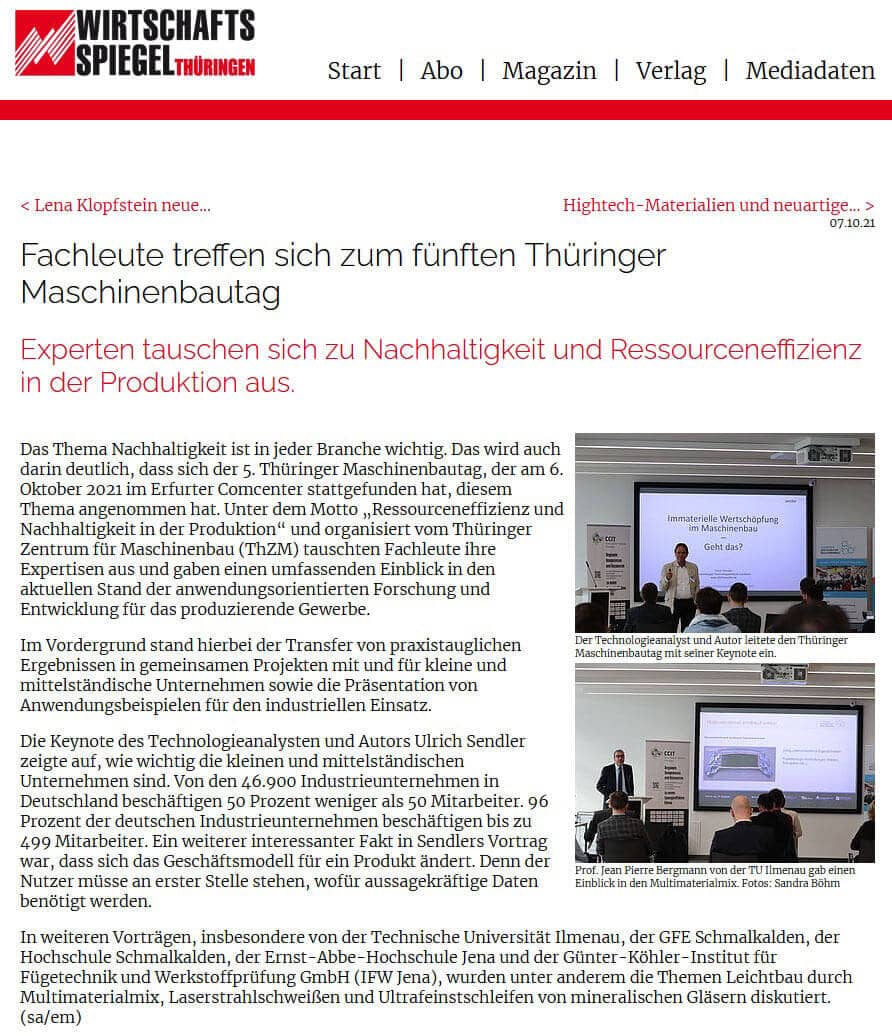The State Development Corporation of Thuringia (LEG), together with the Thuringian Center for Mechanical Engineering and the Technical University of Ilmenau, invited participants to the 5th Thuringian Mechanical Engineering Day under the motto of resource efficiency. About 50 participants attended.
Most of the presentations were very practical and research-oriented, covering new materials, new manufacturing processes such as 3D printing, and new methods of industrial collaboration. In contrast, my keynote was more of a contribution from the eagle’s eye view. It was all the more remarkable that the organizers had deliberately brought me into this setting. It shows that those responsible in Thuringia know how important it is not only to be technically innovative, but also to be particularly innovative in the area of digitalization. Here, as in all the eastern German states, small and medium-sized enterprises are absolutely paramount.
(The pictures of my presentation were taken and made available to me by Michael Hofmann, Managing Director of cdmm).
In my keynote, against the background of the historical development of the industry, I tried to show that even with the most modern, mechatronic product systems – with which many local companies are world market leaders – the business model is still the old one: product manufacturing and sales. There are still far too few approaches, such as the “Tool Arena” platform from EWS Weigele, which I showed as an example, to generate new business using data.
I also found immediate confirmation of this from experts in the subsequent discussion. There is a lot to do here and a lot to talk about. In this respect, my trip was worthwhile. The lecture triggered new ideas.


In particular, the role of SMEs, which with up to 500 employees account for 96% of all industrial companies in Germany, is still massively underestimated. With their decisive contribution to overall industry value creation, much depends on them as to how strongly new, sustainable business models and value creation paths prevail.
It’s great that this was picked up by Wirtschaftsspiegel Thüringen just two days later. And the reactions to Michael Hofmann’s post in LinkedIn on the very same day showed that there are also many interested, attentive and innovative entrepreneurs who network and look for answers to their very specific questions on the basis of such publications alone. Even if they were not able to attend themselves.
I would like to take this opportunity to thank the organizers for inviting me to Thuringia and at the same time to encourage them to continue in exactly the same way. Most people in this country think we are hopelessly left behind when it comes to digitalization and the use of the cloud. This is only true as long as you look at e-commerce, social media and consumer goods. In terms of industry, on the other hand, we have the chance to be forerunners. The expert knowledge of the engineers just needs to be coupled with the know-how of the IT experts. I look forward to continuing to contribute to this.

